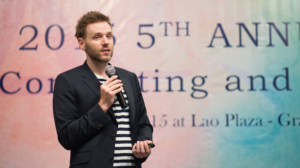Diplomats in the trenches: Improvising in a ‘Non-Permissive Environment’
 Matthew Ference belongs to a select group of American diplomats who passed the Foreign Service entrance exams on their first try. He attributes it to being relaxed and trying not to care too much.
Matthew Ference belongs to a select group of American diplomats who passed the Foreign Service entrance exams on their first try. He attributes it to being relaxed and trying not to care too much.
When he applied in 2003, Ference, who is currently the public affairs officer at the U.S. Embassy in Laos, had already been accepted to two graduate programs. So he “didn’t study for the exams or expect to pass, which reduced the pressure immeasurably,” he said. “I didn’t grow up dreaming of being a diplomat, so I approached the written and oral exams like any other test ― great if I passed, but not the end of the world if I failed.”
More than 20,000 Americans apply to join the Foreign Service every year, but only several hundred are hired, depending on budget constraints and the service’s needs. About 40 percent of all candidates pass the written exam on average each time it is offered, according to the State Department, though many take it more than once. It’s a standardized multiple-choice test with questions about history, politics, economics, geography, popular culture and other areas, and also includes an essay. It doesn’t test for knowledge of the history or functions of diplomacy.
Of those who make it to the oral assessment, about a third are successful on average. It consists of a group exercise based on a case study of a fictitious country where the U.S. Embassy must deal with a certain situation, as well as an individual interview and a case-management exercise, in which each candidate must write a memo to a superior recommending a course of action…
>> READ THE FULL STORY ON THE HUFFINGTON POST

